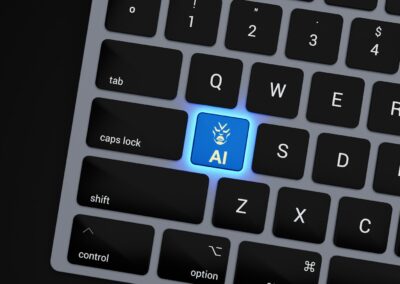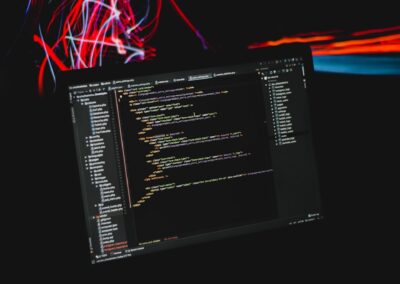Understanding the Impact of AI and Machine Learning on Critical Cybersecurity Functions
The Transformative Power of AI in Cybersecurity
The integration of Artificial Intelligence (AI) and Machine Learning (ML) in cybersecurity has revolutionized the way organizations protect their digital assets. By automating complex tasks and enhancing threat detection, these technologies offer unprecedented potential for improving cybersecurity measures. In regions such as Saudi Arabia, UAE, Riyadh, and Dubai, where technological advancements are rapidly embraced, AI and ML are becoming indispensable tools in the fight against cyber threats.
AI-driven cybersecurity solutions can process vast amounts of data in real time, identifying patterns and anomalies that would be impossible for human analysts to detect. This capability is crucial for preventing cyber attacks and mitigating their impact. For instance, AI can recognize subtle indicators of phishing attempts, malware, and other malicious activities, enabling faster and more effective responses.
Moreover, ML algorithms continuously learn and adapt from new data, improving their accuracy and efficiency over time. This means that cybersecurity systems can evolve alongside emerging threats, providing a dynamic defense mechanism. As AI and ML technologies advance, their applications in cybersecurity are expected to expand, offering even greater protection for businesses and organizations.
The Benefits of AI and ML in Cybersecurity
One of the most significant benefits of AI and ML in cybersecurity is their ability to enhance threat detection and response. Traditional cybersecurity measures often rely on predefined rules and signatures, which can be bypassed by sophisticated attackers. In contrast, AI and ML can identify unknown threats by analyzing behavioral patterns and detecting deviations from the norm.
In the context of business success, particularly in dynamic markets like those in Saudi Arabia and the UAE, the ability to quickly identify and respond to threats is crucial. AI-powered cybersecurity solutions can provide real-time insights and automated responses, reducing the time between detection and mitigation. This rapid response capability can prevent data breaches and minimize their impact, protecting both financial and reputational assets.
Additionally, AI and ML can improve the efficiency of cybersecurity operations. By automating routine tasks such as log analysis and threat hunting, these technologies free up human analysts to focus on more strategic activities. This not only enhances the overall effectiveness of the cybersecurity team but also reduces operational costs. In a region where digital transformation is a priority, such as Riyadh and Dubai, the cost-effectiveness and efficiency of AI-driven cybersecurity solutions are particularly appealing.
The Risks and Challenges of AI in Cybersecurity
While the benefits of AI and ML in cybersecurity are substantial, there are also significant risks and challenges associated with their use. One of the primary concerns is the potential for adversaries to exploit AI systems. Cyber attackers can use AI to develop more sophisticated attacks, evade detection, and even manipulate AI-driven defense mechanisms. This creates an ongoing arms race between cybersecurity professionals and malicious actors.
Moreover, the reliance on AI and ML introduces new vulnerabilities. AI systems are only as good as the data they are trained on. If the training data is biased or incomplete, the AI may produce inaccurate or flawed results. This can lead to false positives, where benign activities are incorrectly flagged as threats, or false negatives, where actual threats go undetected. Ensuring the quality and integrity of training data is a critical challenge in the development and deployment of AI-driven cybersecurity solutions.
Another risk is the potential for over-reliance on AI and ML. While these technologies can greatly enhance cybersecurity efforts, they should not replace human judgment and expertise. Cybersecurity is a complex and multifaceted field that requires a combination of automated tools and skilled professionals. Over-reliance on AI can lead to complacency and a false sense of security, making organizations vulnerable to unexpected threats.
Balancing Benefits and Risks: A Strategic Approach
To maximize the benefits and mitigate the risks of AI and ML in cybersecurity, organizations need to adopt a strategic approach. This involves integrating AI-driven solutions into a broader cybersecurity framework that includes human oversight and continuous improvement. In regions like Saudi Arabia, UAE, Riyadh, and Dubai, where digital innovation is a priority, a balanced approach to cybersecurity is essential for sustaining business success and resilience.
Executive coaching services can play a vital role in this process by helping leaders understand the potential and limitations of AI and ML in cybersecurity. Coaching programs tailored to cybersecurity can provide executives with the knowledge and skills needed to make informed decisions about technology adoption and implementation. By fostering a culture of continuous learning and innovation, organizations can stay ahead of evolving cyber threats and maintain robust defenses.
Furthermore, collaboration between the public and private sectors can enhance the effectiveness of AI-driven cybersecurity initiatives. Governments in the Middle East have shown a strong commitment to advancing technology and cybersecurity. By partnering with private enterprises, they can support the development of advanced cybersecurity solutions and promote best practices across industries.
Conclusion: The Future of AI in Cybersecurity
The integration of AI and ML in cybersecurity represents a significant advancement in the fight against cyber threats. These technologies offer powerful tools for enhancing threat detection, response, and overall cybersecurity efficiency. However, their adoption also introduces new risks and challenges that must be carefully managed.
In dynamic regions like Saudi Arabia, UAE, Riyadh, and Dubai, where technological innovation is key to business success, organizations must take a strategic approach to integrating AI and ML into their cybersecurity frameworks. This involves balancing automated solutions with human expertise, ensuring the quality of training data, and fostering a culture of continuous learning and improvement.
By leveraging the benefits of AI and ML while addressing their risks, businesses can build resilient cybersecurity defenses that protect their digital assets and support long-term success. As cyber threats continue to evolve, staying ahead of the curve will require ongoing investment in technology, training, and leadership. With the right approach, AI-driven cybersecurity can become a cornerstone of modern business strategy.
#AI #MachineLearning #Cybersecurity #BusinessSuccess #LeadershipSkills #ProjectManagement #SaudiArabia #UAE #Riyadh #Dubai #ArtificialIntelligence #Blockchain #TheMetaverse #ExecutiveCoaching #GenerativeAI #ModernTechnology























